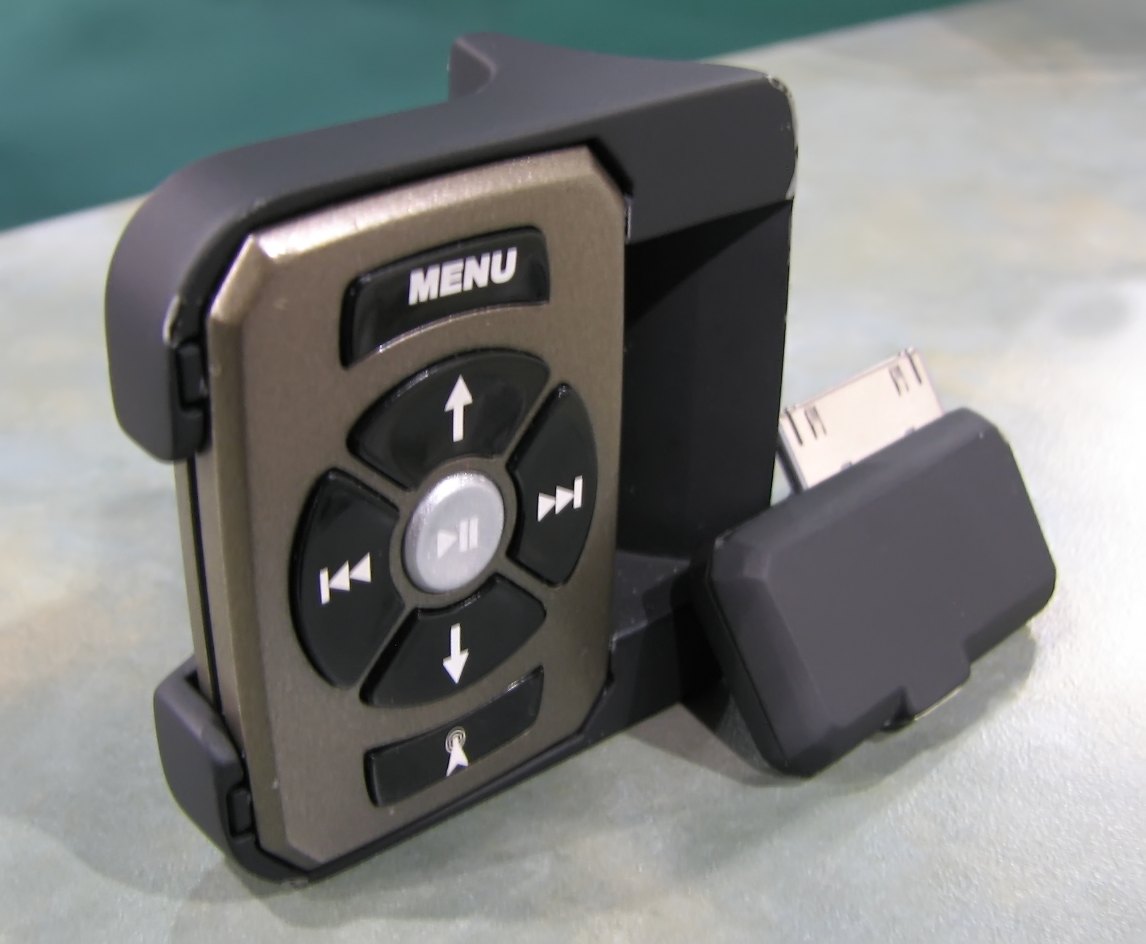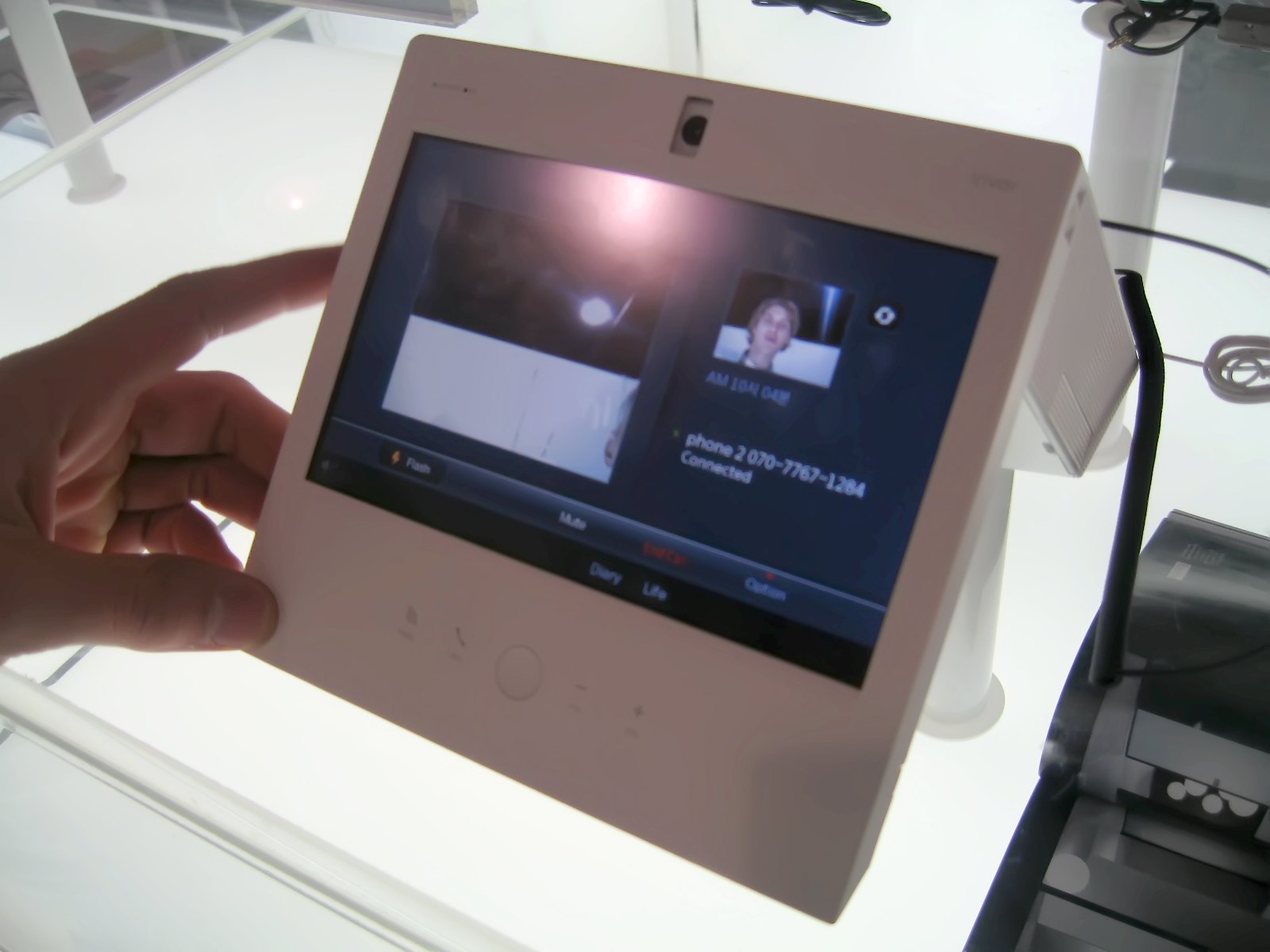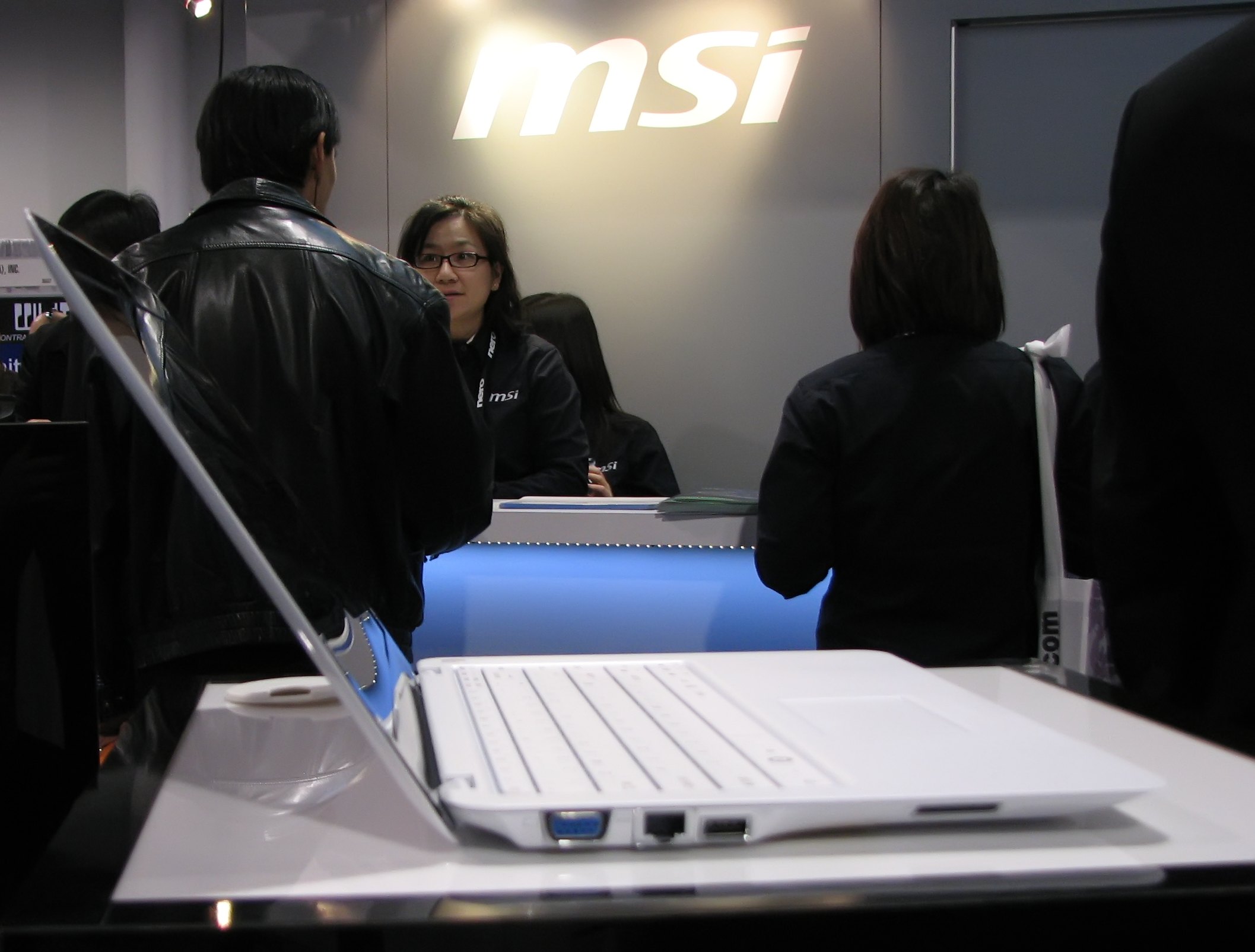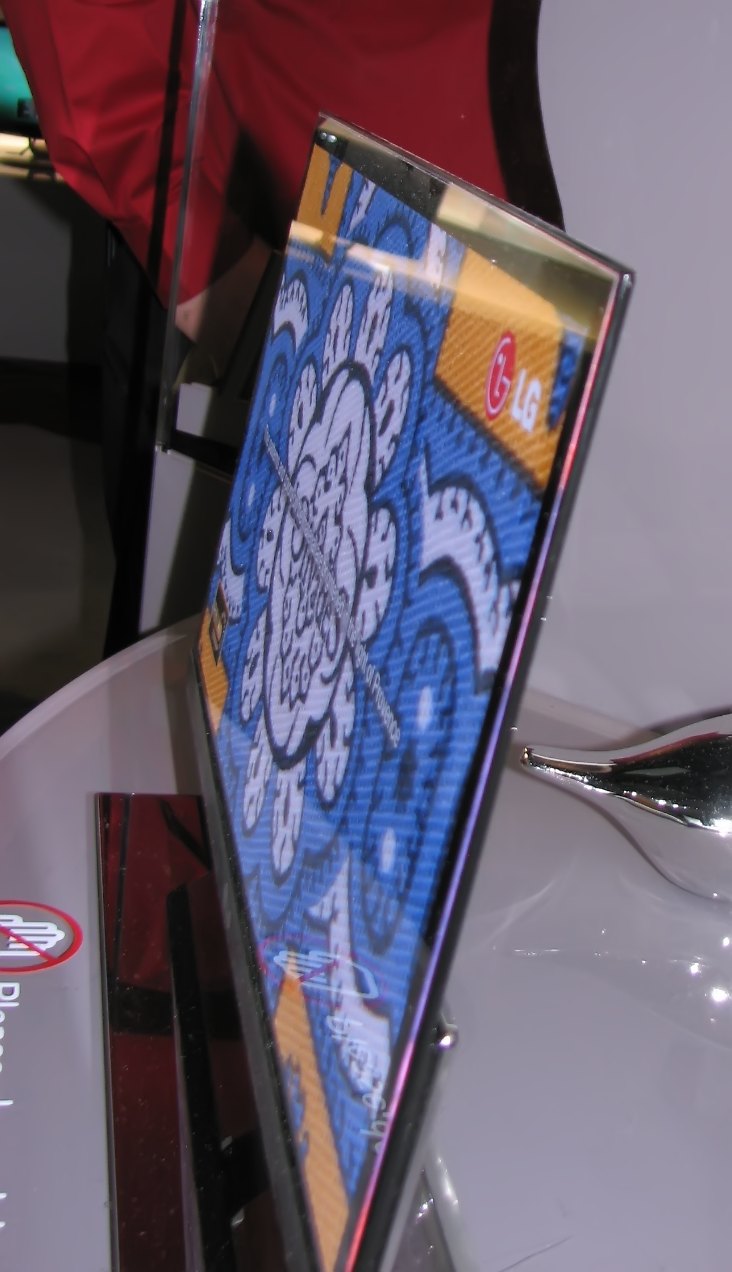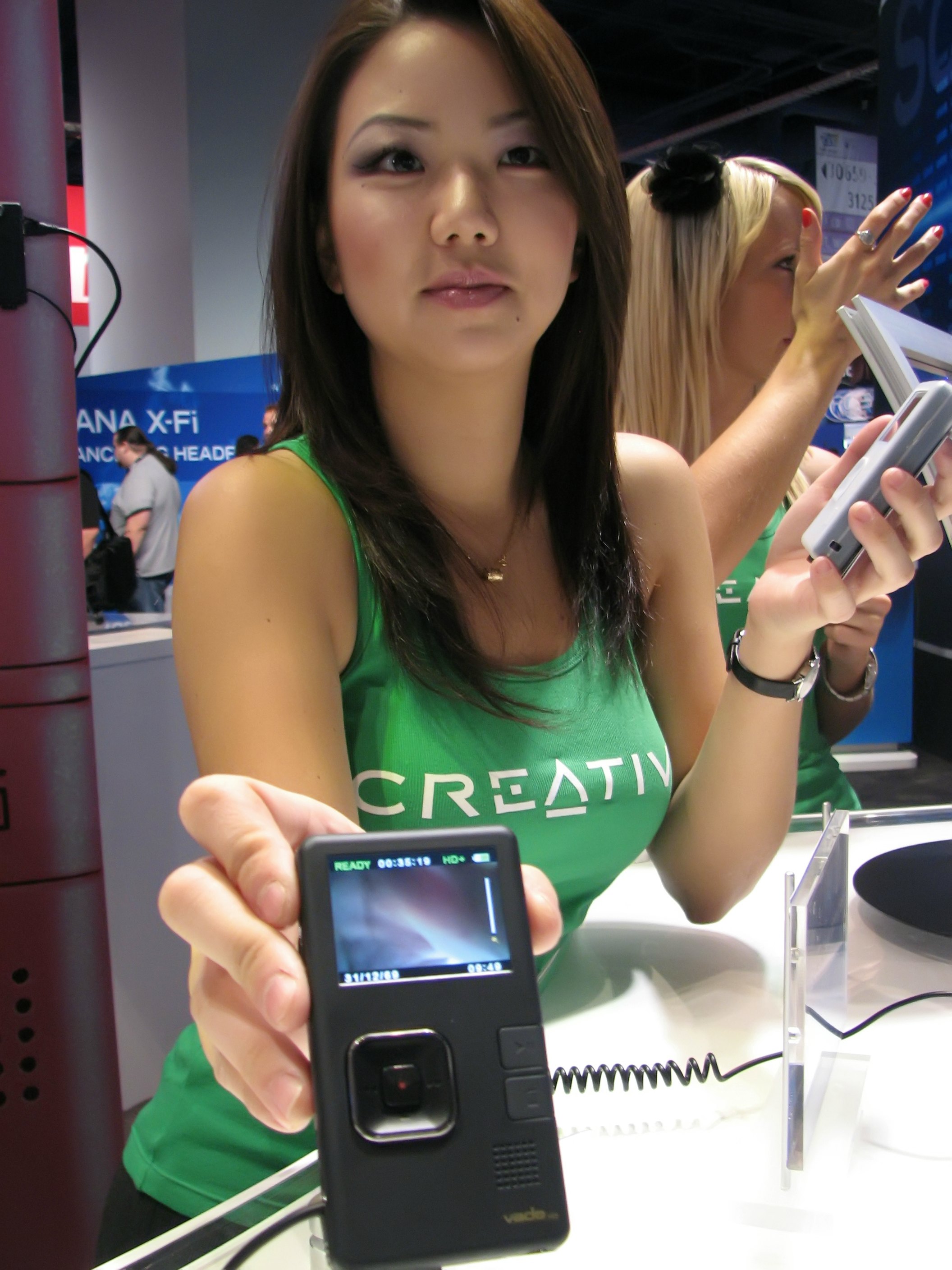FEATURE: THE BEST OF CES '09: Part 3
Don't miss Part 1 of our Best of CES feature story.
And if you missed Part 2, click here.
CES is a show that's so big, you can literally drown in the sea of products. However, not all products that show up at CES are worthy of customer consideration. True enough, there's always garbage out there, but we try to sift through the junk.
Despite the smaller showing--which is still big--CES was a blast to be a part of this year; any tech enthusiast who gets a chance should definitely check it out in the future. Now that it's over though, we attempt to pass along more of the near endless sea of new product releases and industry news uncovered during the event.
10. WiFli iPod/iPhone Remote by iSimple
Stumbling around the automotive hall at CES, I fell upon a little gem of a product that may just solve my in-car iPhone woes. The WiFli by iSimple hooks up to an iPod or iPhone, which then allows the included wireless remote controller to control the audio playback of the iPod or iPhone. The remote controller can be clipped onto the steering wheel for easy access, so there is no longer a need to fumble about with the iPhone or iPod to change songs.
The WiFli also charges the iPhone or iPod when it is connected and it can wirelessly transmit the audio to the car`s stereo over the FM radio band. If the vechicle`s stereo supports RDS technology, the WiFli will also transmit the current track data to the stereo`s display, which is a fun extra to have. The only downside seems to be that there is a limited choice of which FM frequency can be selected, but for $99 the price is not too bad. The WiFli should be out in mid to late spring.
Get Tom's Hardware's best news and in-depth reviews, straight to your inbox.
Those who have more recent cars however, may already be enjoying convenient iPod controls, thanks to more and more car manufacturers integrating iPod connectivity into cars.
8. The iRiver Wave Home
The iRiver booth had a few gems in it I found, but none that I wanted more than the iRiver Wave Home. This all-in-one device has the same functionality as the iRiver Wave Internet phone we saw earlier in the week, such as free VoIP calling, but it takes things a step further by adding video calling and a larger 7-inch touchscreen display.
The iRiver Wave Home comes with a wireless handset and speakerphone to make up for its lack of portability, but it also features an FM radio, photo/video/audio playback, an adjustable 1.3-megapixel webcam, Ethernet, an SD card slot, USB connectivity, pen digitizer support and several other nifty abilities. Overall, the iRiver Wave Home seems to have the potential to be a great device to have in the kitchen, home office and bedroom. We were told that the iRiver Wave Home would be out in the United States by Summer 2009, retailing for under $400.
7. SanDisk's VirtualRPM
Currently, the most common way to express the performance of a SSD has been by describing sequential read and write speeds, which really does only convey a portion of a drive's performance. SanDisk believes a SSD's random read and write performance is actually the most important aspect to consider, as it claims that PC client storage performance is almost exclusively dependent on random read and write performance.
What VirtualRPM is then is SanDisk's attempt at making a consumer-oriented standardized measurement for SSDs that can be directly and easily compared to the common measure of traditional HDD performance--revolutions per minute (RPM). Of course, the derivation SanDisk used to determine the vRPM number still needs to be tested for fairness, as well as finding acceptance by other SSD manufactures.
SanDisk claims these new drives are using a new SSD controller with an optimized algorithm to increase random read and write speeds by up to 100X. SanDisk 40,000 vRPM, or 5X the speed of a 7200 RPM hard drive. In terms of sequential read and write speeds though, these new drives achieve only 200 MB/sec. and 140 MB/sec., respectively, which is slower than many of the SSDs recently released from other manufactures.
SanDisk's new MLC-based 3G SSDs come in sizes ranging from 60 GB to 240 GB, priced from $149 to $499, and they will be available in mid 2009.
6. Toshiba's SCiB Quick Charge Battery Technology
Toshiba was flaunting off its still unreleased SCiB (Super Charge ion Battery) technology, which allows notebooks to recharge four times faster than that of traditional notebook batteries. With just ten minutes of charging, a notebook battery with Toshiba's SCiB technology can be charged to 90-percent of its capacity.
When I am on the go, being able to find a power outlet to charge my notebook with is not always problem; it is the hour of waiting for the notebook to charge that often end up annoying me. Although no commercial products currently use this SCiB technology, prototypes using the technology are apparently working bug-free, which could mean we will be seeing this technology in new notebooks sometime very soon.
I'm not entirely sure yet, what effect this will have on the longevity of the battery. These days, there seems to be problems left and right with notebook batteries losing capacity too quickly over time--particularly with Sony-made batteries.
5. The MSI X320 ultra-portable notebook
MSI had on display a concept design of its upcoming X320 ultra-portable notebook. This 13.4-inch notebook did remind me of the Apple Macbook Air a bit; stylish, slim and lightweight, but it wasn`t a Mac, so I was over-joyed. Even at Tom`s Hardware, I fear that I may be one of the few remaining dedicated PC users.
The MSI X320 weighs less than 2.9-pounds, has a thickness of 0.78-inches, comes with Intel`s newest platform and has a display aspect ratio of 16:9. There is a 4-cell and an 8-cell battery option, with battery life reaching up to 10-hours with the 8-cell option. Expect the notebook to be released in the first quarter of 2009. MSI also had on display its innovative U115 netbook with hybrid storage and its U120 WiMax-ready netbook.
4. The LG Objet AMOLED TV
LG had several of its active-matrix OLED TVs on display, which looked absolutely stunning. With a thickness of just 0.85-centimeters, these super-slim 15-inch TVs offered vidid colors from nearly any viewing angle and they had a black level that could put most plasma TVs to shame. The resolution of these AMOLED TVs was apparently just 1366 x 768, so one can only imagine what an actual full HD AMOLED display might look like. There were other similar OLED displays also being showcased at other booths from various companies, but these LG displays were the ones that stuck in my mind most.
LG expects its AMOLED TVs to go into production in June 2009 and to be available later in the year. The displays have a lifetime of 20,000 to 30,000 hours.
3. SDXC Cards
The SD Association was giving presentations of its new SDXC (eXtreme Capacity) card technology that will allow SD cards to reach capacities upwards of 2 TB, while also achieving speeds of up to 300 MB/sec. Putting that into perspective, 2.5-inch solid state drives have only recently been announced in capacities of 1 TB and the fastest are just barely achieving 300 MB/sec. transfer speeds.
The SD Association foresees these new SDXC cards opening up a world of new possibilities for consumers, including the ability for digital cameras to take HD photographs at 60 frames per second and allowing a new form of movie distrubution. As an example of a movie distribution method, a consumer before boarding a plane could simply stick their SDXC card into a digital-content vending machine to quickly download several DRM`d movies to watch later during their flight.
The 1 GB microSD cards that the SD Association were handing out for free after the presentation were valued at $100 just three years ago, which gives me high hopes of what to expect in just another three years.
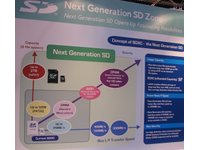
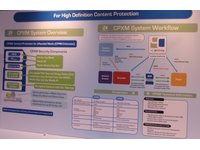
2. The Silverstone Raven RV01 System Enclosure
There were many new PC case designs on display at CES, ranging from ones with mini-refrigerator units inside them to those with touchscreen displays, but my favorite case design in the end was by Silverstone. The Silverstone Raven RV01 offers a unique concept, as it moves the expansion slot outputs and cabling from the rear of the case to instead the top of the case. With such a PC case, no longer is a flashlight and a great level of dexterity required to connect a new cable to a PC system located under a dark and dingy desk.
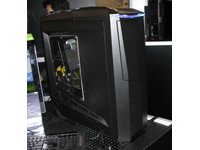
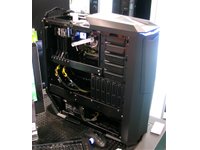

1. The Sony Lifestyle PC
The Sony VAIO Lifestyle PC was all the buzz at the Sony booth and probably for good reason. The PC is claimed as the world's lightest 8-inch notebook and is powered by a 1.33 GHz Intel processor (512 KB L2 Cache, 533 MHz FSB). Although it may not be exactly the fastest notebook around, its long slim dimensions make the device potentially pocketable and gives the notebook plenty of room for the keyboard and widescreen display.
One thing that the Sony Lifestyle PC does leave out though is a touchpad, instead replacing it with a little keyboard nub, such as those found on Thinkpad notebooks. Keyboard nubs take a little while to get use to, but they can quickly grow on a person to the point where a trouchpad becomes unbearable to use anymore.
Which trade shows do you find the most interesting? CES, E3, Computex, CeBit or others? Do you care about tradeshows outside of the U.S.? Let us know!
